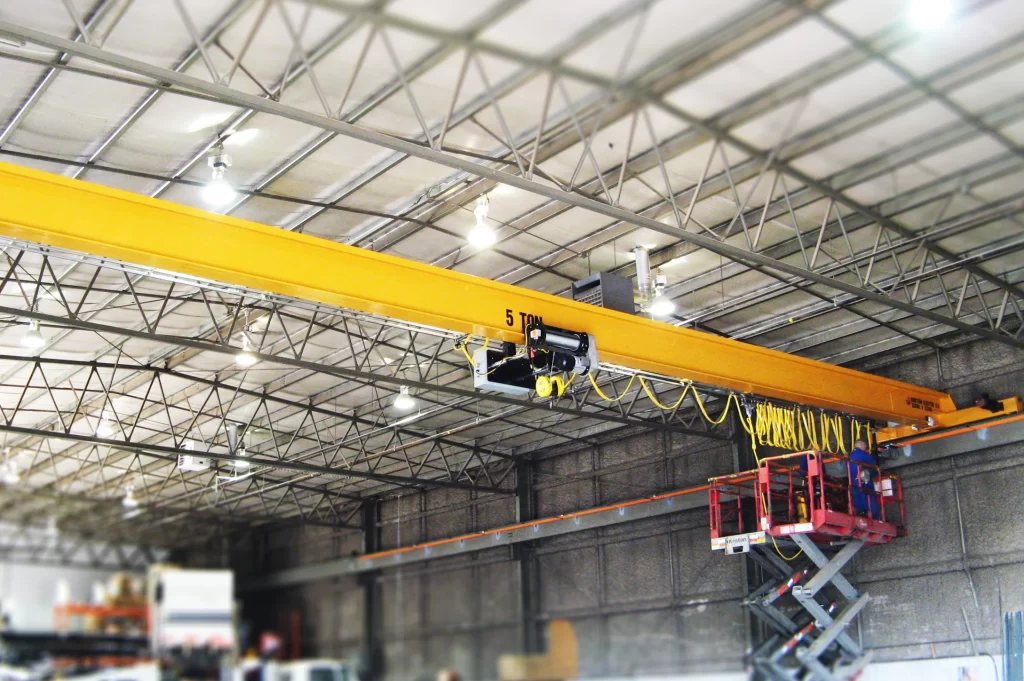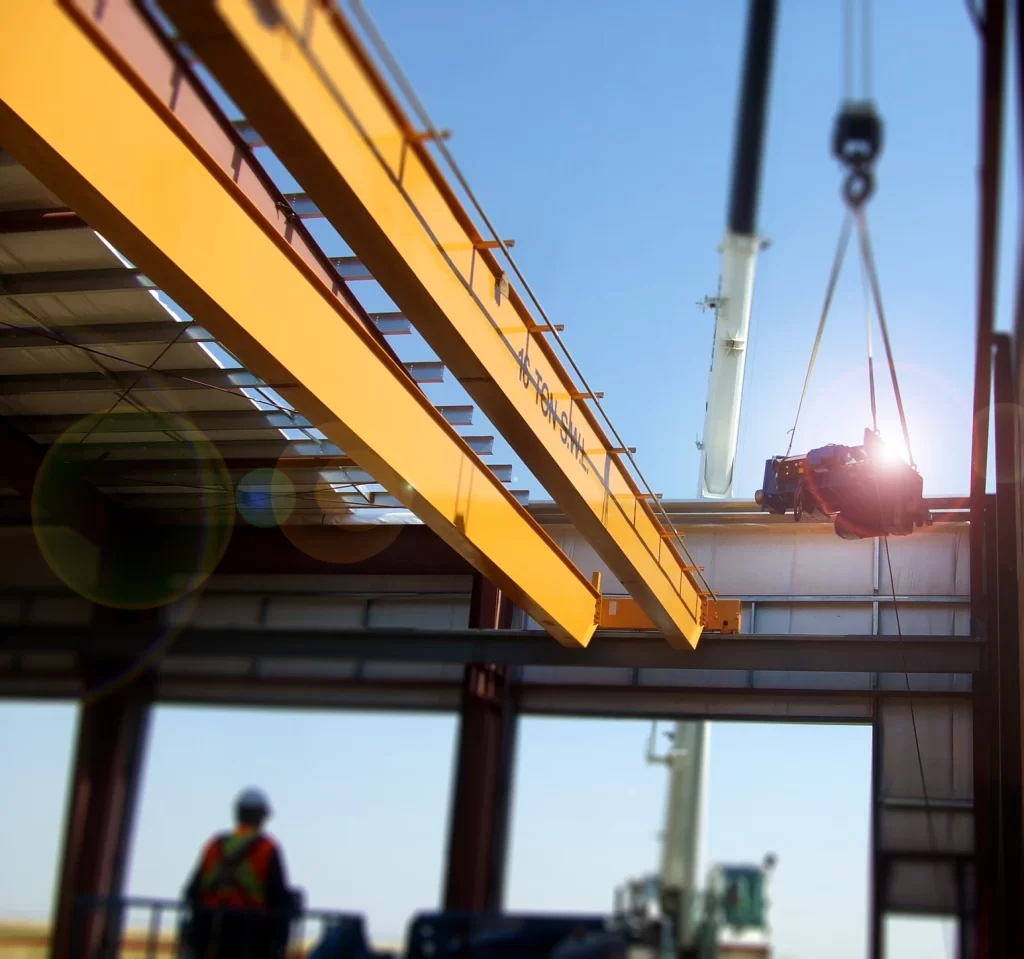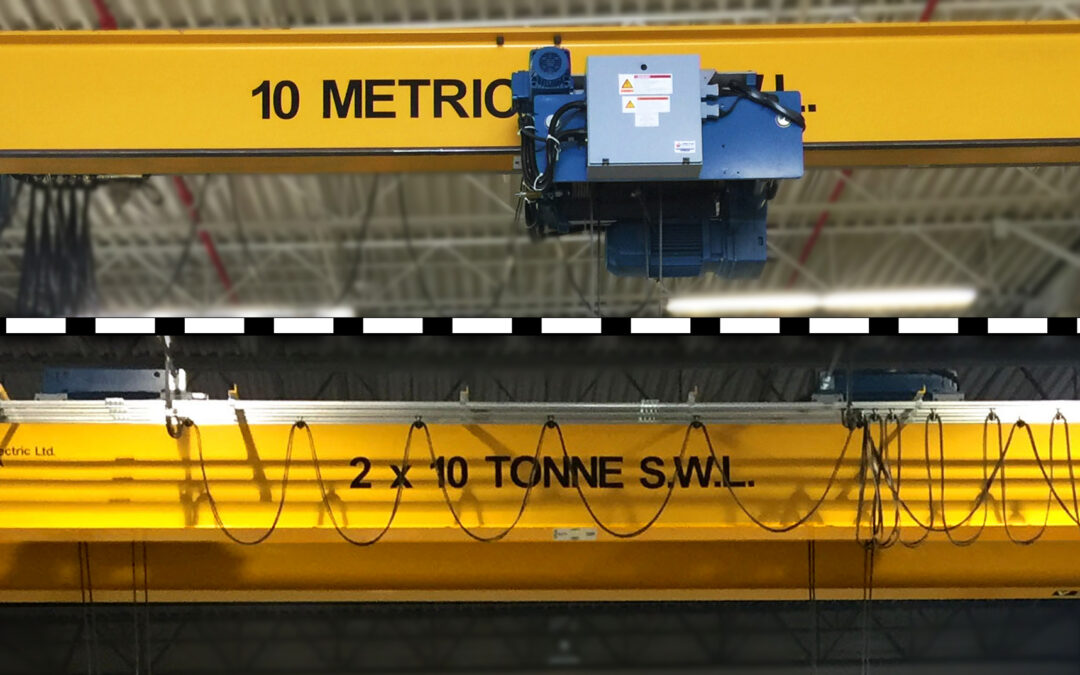In the world of overhead bridge cranes, customization is key. Crane designs have a number of configurations and adaptations available that can make a critical difference in the production and efficiency of the crane itself.
Many important factors need to be considered when designing a new bridge crane system, such as hoist type, span, top or under-running configuration and if the crane will utilize a single or double girder design.
Both single and double girder styles have their own benefits and disadvantages. The final decision will depend on aspects such as lift height, capacity and budget.
Single Girder

COST
First and foremost, single girder cranes are less expensive. Since this configuration requires less materials, less engineering, and less time to install, the overall cost is often lower.
ROOM
Although single girder cranes do not usually allow for the greatest hook height, they can provide an overall greater crane height. So if the facility has large barriers, walls, or other equipment which requires a greater amount of vertical space, a single girder crane can be affixed much closer to the actual ceiling providing more room allowance underneath.
WEIGHT
Since many overhead bridge cranes are affixed to the actual facility building, the dead-weight of the crane itself can factor in greatly to the construction of the material handling system. Since single girder bridge cranes are lighter, a lighter runway system can be utilized which puts much less strain on the building.
Double Girder

HEIGHT
Typically, double girder bridge cranes are constructed with the hoist above the beams, while the majority of single girder styles have the hoist affixed below. This means that the hook has further to travel to the hoist when it is configured as a double girder design, allowing the user higher lifting heights.
CAPACITY
Adding a second beam creates a much more rigid lifting system. The additional reinforcement and support acquired with this design allows for much higher lifting capacities of the crane itself.
STABILITY
Bracing the crane between two beams creates four points of contact rather than the one point of contact achieved with an under-slung single girder design. More connection points ensures greater stability and makes it easier for the user to manipulate loads. If the user needs to rotate or turn the load while it is in the air, the four point connection reduces swing and sway, making it a much safer and stable process.
OPTIONS
With the hoist riding above the beams in a double girder design, the area beneath the beams is left free, opening up the possibility of adding a service platform. Having a service platform allows for much easier access to conduct maintenance and inspections of the crane in the future.
Custom
Though the above descriptions of both single and double girder bridge designs are quite common, they are not set in stone. Kristian can create and customize your bridge crane to fit your needs exactly.
Contact us here for more information.

